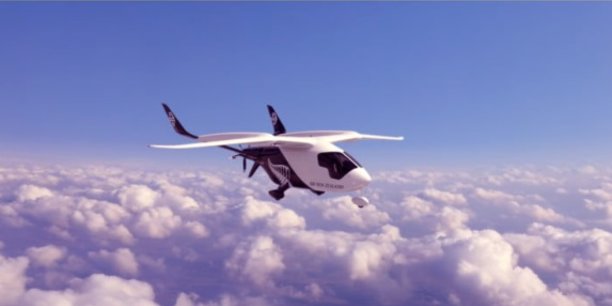
Air New Zealand wants to achieve the milestone of electrifying freighter aircraft from 2026
Air New Zealand is betting on electricity. The company ordered the Alia electric aircraft from the American aerospace manufacturer Beta Technologies. It is scheduled to be in use from 2026, and will be able to deliver parcels and letters across the country. “Air New Zealand becomes the first airline” To use new generation aircraft for commercial flights », according to its ambition announced on Wednesday by its Director of Sustainable Development, Kerry Hanafin.
Flights 150 km initially
Beta Technologies, which is based in the US state of Vermont, and which indicated on its website that it has received funding from the Fidelity Fund and the Amazon fundraising group, is developing electric aircraft with traditional take-offs and other models with vertical take-offs.
As for the Alia, the battery-powered device can be fully recharged in about an hour. As with electric cars, how far you can go is key. This model is about 12 meters long and weighs three tons, and it traveled a distance of 480 kilometers in one test flight, which also determines New Zealand’s national airline in a press release. Its maximum speed is 270 km/h, and it can fly at an altitude of up to 3,000 meters above sea level. After certification, it will be used for initial flights of about 150 kilometres.
Toward passenger transportation?
” Next generation aircraft have the potential to decarbonize our regional operations The airline’s CEO, Greg Foran, told reporters in Auckland. He hopes that incorporating Alia into its fleet will allow Air New Zealand to advance this electric technology and fly larger, new-generation aircraft from 2030. Especially since Air New Zealand has an option on nearly two dozen other Alia electric aircraft. However, the company has not yet set a date for potential passenger flights on electric aircraft.
For its part, Scandinavian Airlines announced last May its intention to transport passengers on commercial electric flights in 2028. It even opened reservations last June for routes and dates that are not yet known. Then she called the passengers To join this new chapter in aviation history “. Heart Aerospace’s ES-30, the aircraft that will be used by the Scandinavian company, should have a range of up to 200 kilometers, or even 400 kilometers if the electrical supply is supplemented by generators.
The great promises of hybrid electricity
Furthermore, at the end of November, the EcoPulse, an experimental aircraft powered by hybrid electric propulsion, took off from Tarbes Airport on November 29 on a one-forty-hour flight.
” During the flight, the crew activated the electric thrusters and checked the proper functioning of the flight control computer, high-voltage battery, distributed electric propulsion system and hybrid electric turbo-generator of the experimental aircraft. », Details of the project partners, Airbus, Safran and Daher.
Introduced at the 2019 Paris Air Show, the EcoPulse is a derivative of Daher’s single-engine TBM. In addition to its central thermal engine, it is equipped with six electric motors distributed along the wings supplied by Safran, whose power comes from a battery designed by Airbus.
However, due to the lack of powerful enough electric batteries, electric aircraft It will not be able to carry 200 passengers over 1,000 kilometers by 2035, as Safran had already said in 2019. However, this presents a challengeA necessary step to achieve significant gains in fuel consumption and achieve the 2050 goals for carbon neutrality.
For its part, VoltAero hopes to fly a five-seater plane at the end of the year that operates on the principle of hybrid cars, where it takes off and lands in electric mode, while part of the flight can be carried out using a thermal device. The engine recharges the on-board batteries.
(With AFP)

“Reader. Travel maven. Student. Passionate tv junkie. Internet ninja. Twitter advocate. Web nerd. Bacon buff.”
